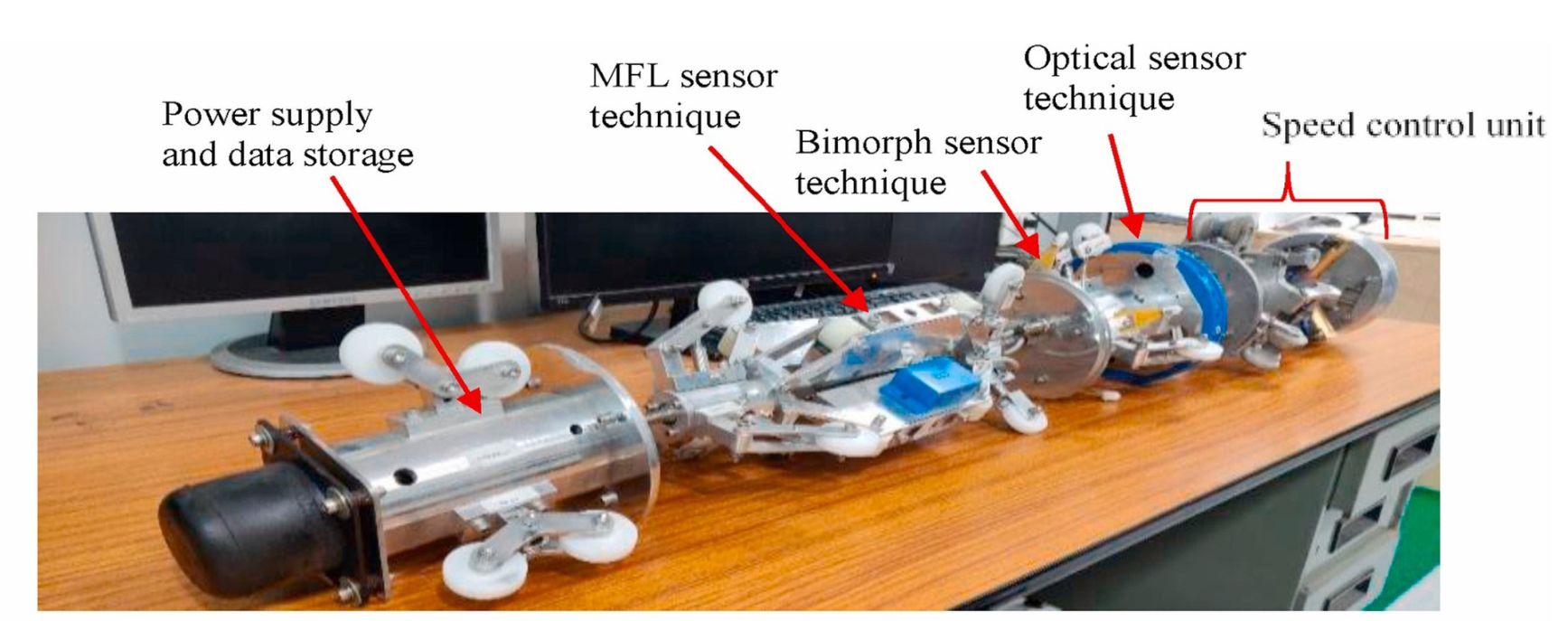Research projects
Spatiotemporal learning of charged particles beams dynamics (in particle accelerators)
6D phase space (x,y,x,px,py,pz) of charged particle bunches evolves under the influence of EM fields along the accelerator. The problem of can be thought of as a spatiotemporal dynamical sytem, where the system parameters (like amplitude, phase of RF cavity, magnet strenth, etc.) modulates a charged particle beam.
- In Paper, we propose two-step unsupervised deep learning framework named as Conditional Latent Autoregressive Recurrent Model (CLARM) for learning the forward spatiotemporal dynamics.
- The model can generate phase space at various accelerator modules by sampling and decoding the structured latent space representation.
- The model also forecasts future states (downstream states) of charged particles from past states (upstream states). More about it on the project page.
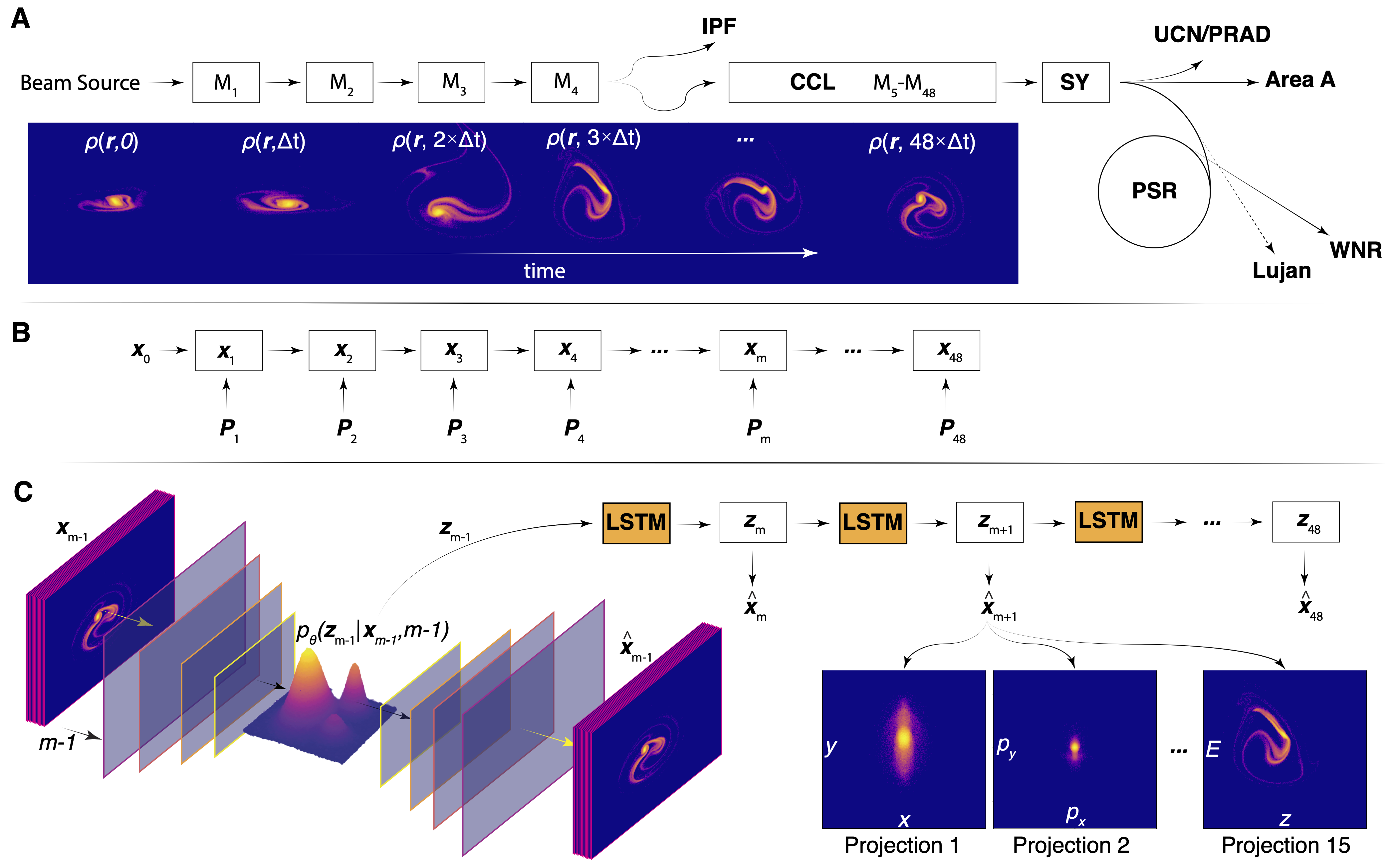
- In Paper, we use a reverse latent evolution model (CLARM is a special use case of a more broader LEM) to solve the inverse problem of predicting 6D phase space projections across all upstream sections given on downstream phase space measurements as inputs.
- The proposed model also captures the aleatoric uncertainty of the high-dimensional input data within the latent space.
- The uncertainity is propagated in the latent space through the temporal learner to estimate the bounds for all upstream predictions, demonstrating the robustness against in-distribution variations in the input data.
- In Paper, we use classifier-pruned Bayesian optimizer for efficient exploration within a temporally-structured latent space.
- The CBOL-Tuner adaptively search and filter the latent space for optimal solution (i.e., RF settings for minimal beam loss in the accelerator).
- CBOL-Tuner demonstrates superior performance in identifying multiple optimal settings and outperforms alternative global optimization methods.
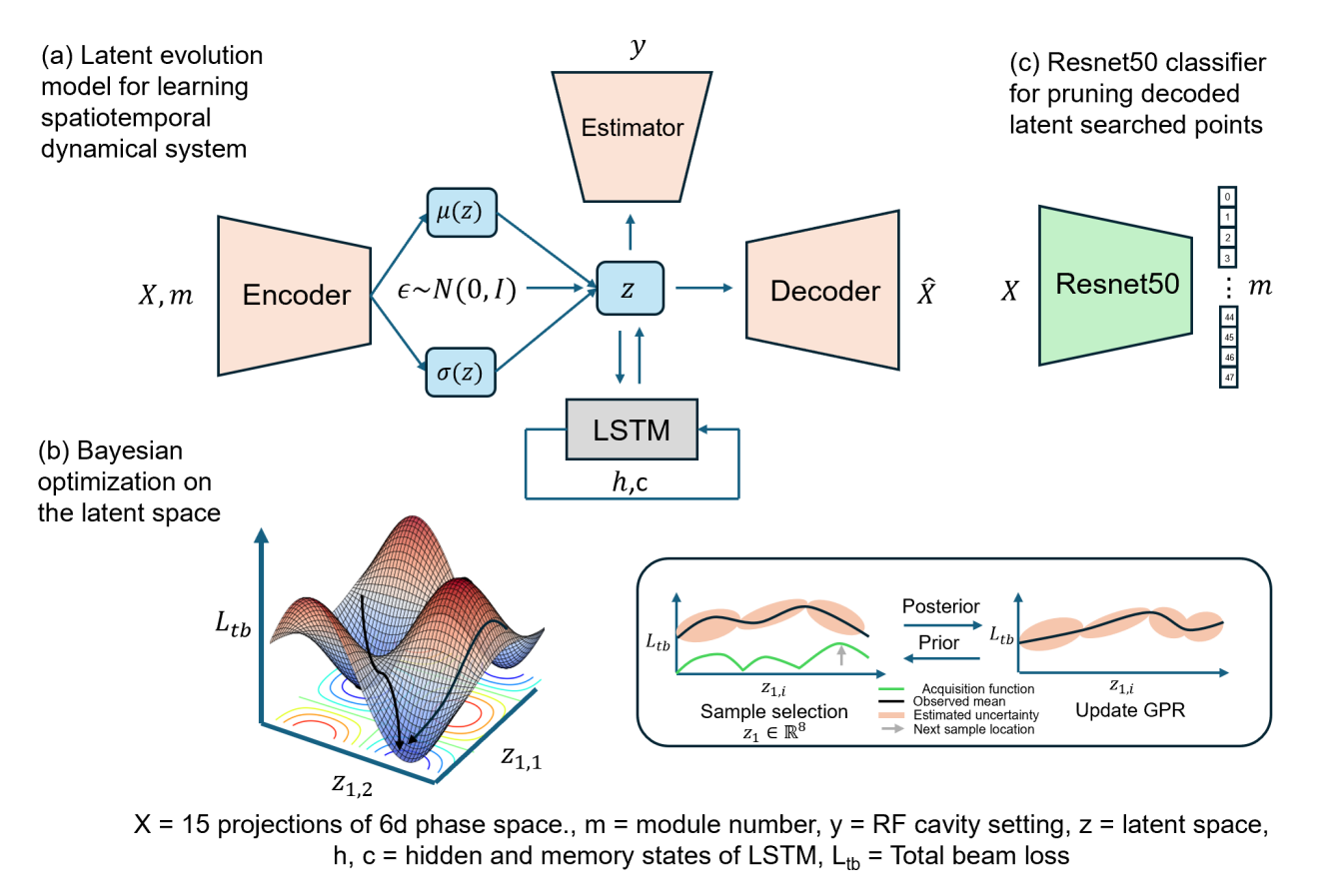
Structural health monitoring
- Out-of-distribution detection/Anomaly detection in aerospace composites:
- Collecting datasets accommodating all possible damage scenarios is cumbersome, costly, and inaccessible for aerospace applications.
- We have proposed two different self-supervised representation learning approaches to learn the distribution of baseline signals.
- The trained self-supervised learner is used for delamination prediction with an anomaly detection philosophy. We metholdogies like autoencoders, variational autoencoders, PCA-SVM, ICA-SVM are employed.
- More about this work is available here Paper-1, Paper-2

- Deep variational filtering for temperature effects in guided wave structural health monitoring. More about this work is available in Paper
- Physical-knowledge assisted ML for structural health monitoring. More about this work is available in this Paper
- Deep surrogate inverse solvers for guided wave SHM: More about this work is available here Paper
Neural surrogate solvers for PDEs.
- Physics-informed Neural Networks + Bayesian-optimization for parameter estimation of PDEs.
- PINN is used to solve the partial differential equation (PDE), whereas Bayesian optimization (BO) estimates its parameter.
- The Bayesian-optimized physics-informed neural network estimates wave velocity associated with wave propagation PDE using a single snapshot observation.
- We see robust predictions in limited iterations across different runs. More about the work is available in this Paper
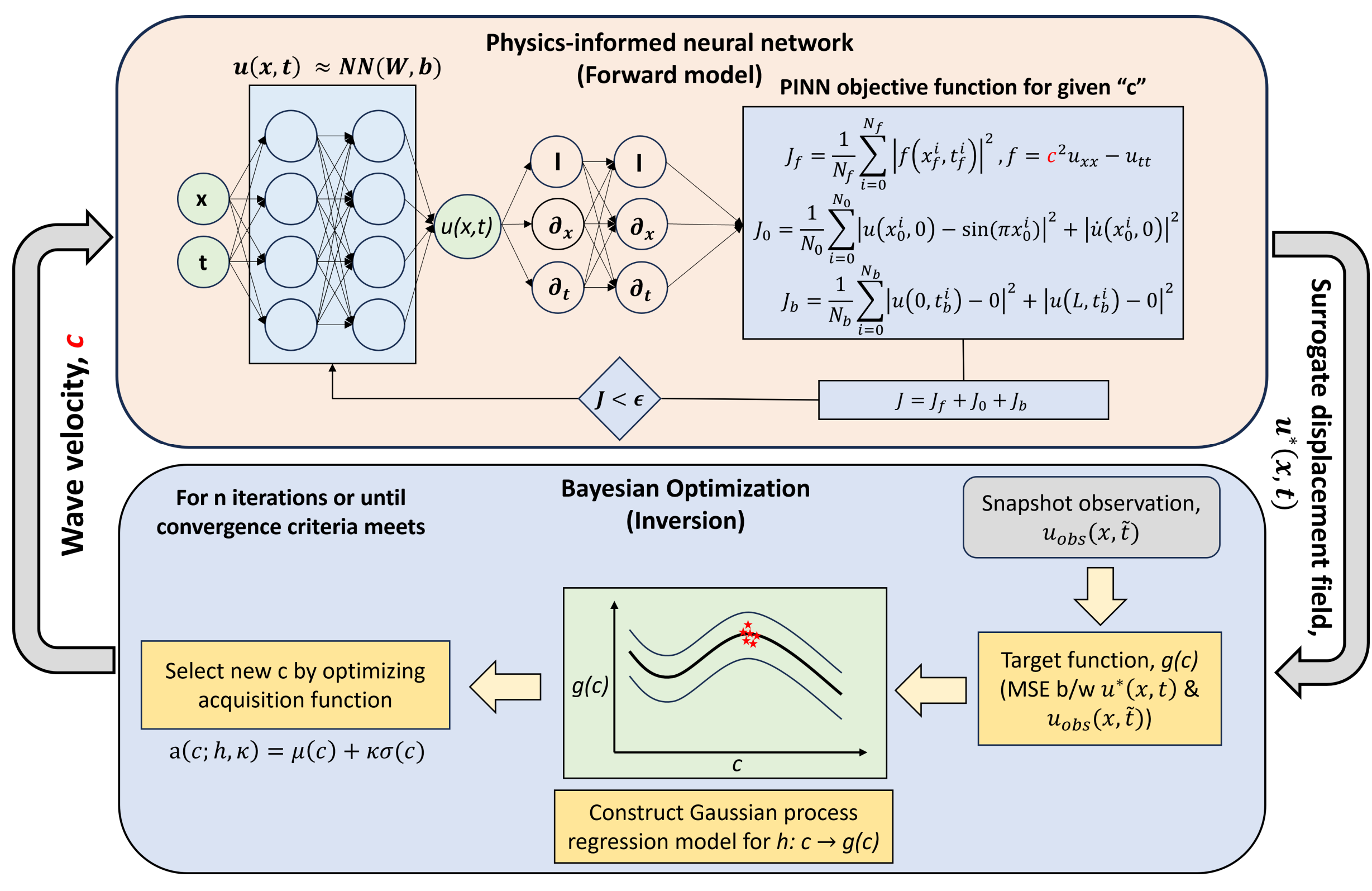
Material design and discovery
- Composite material property estimation, composite material generation/discovery:
- AI-accelerated property prediction, discovery, and design of materials have emerged as a new research front with many promising features. There are many investigations on different materials, but no emphasis is placed on composite materials.
- In order to accelerate and scale the prediction, discovery, and design, a deep generation approach using variational autoencoders is proposed for composite materials.
- The generator can generate enormous data, eliminating the demerits of both experiments and simulations.
- More about this? Available in these papers: Paper-1, Paper-2.
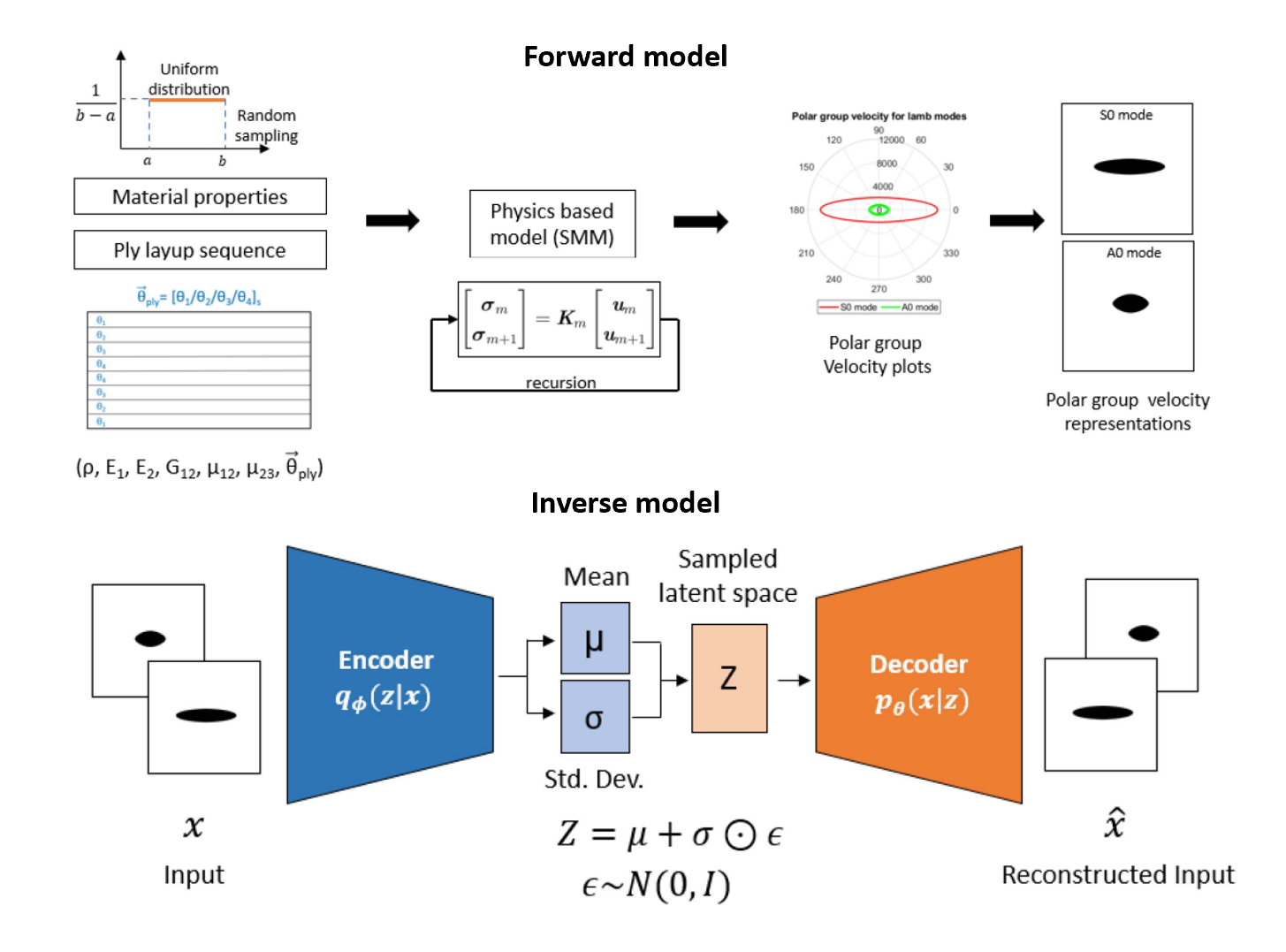
Safety of space habitats
- Leakage estimation in concept space habitats/pressurized habitat systems using real-time adaptive optimization
- Long-term extraterrestrial habitats must operate under continuous disruptive conditions arising from extreme environments like meteoroid impacts, extreme temperature fluctuations, galactic cosmic rays, destructive dust, and seismic events.
- Loss of air or atmospheric leakage from a habitat poses safety challenges that demand proper attention. Such leakage may arise from micro-meteoroid impacts, crack growth, bolt/rivet loosening, and seal deterioration.
- Leakage estimation in deep space habitats is posed as an inverse problem. A forward pressure-based dynamical model is formulated for atmospheric leakage.
- Experiments are performed on a small-scaled pressure chamber where different leakage scenarios are emulated and corresponding pressure values are measured.
- EWARS algorithm is developed and validated for the inverse problem of real-time leakage estimation.
- More about it is published in this Paper
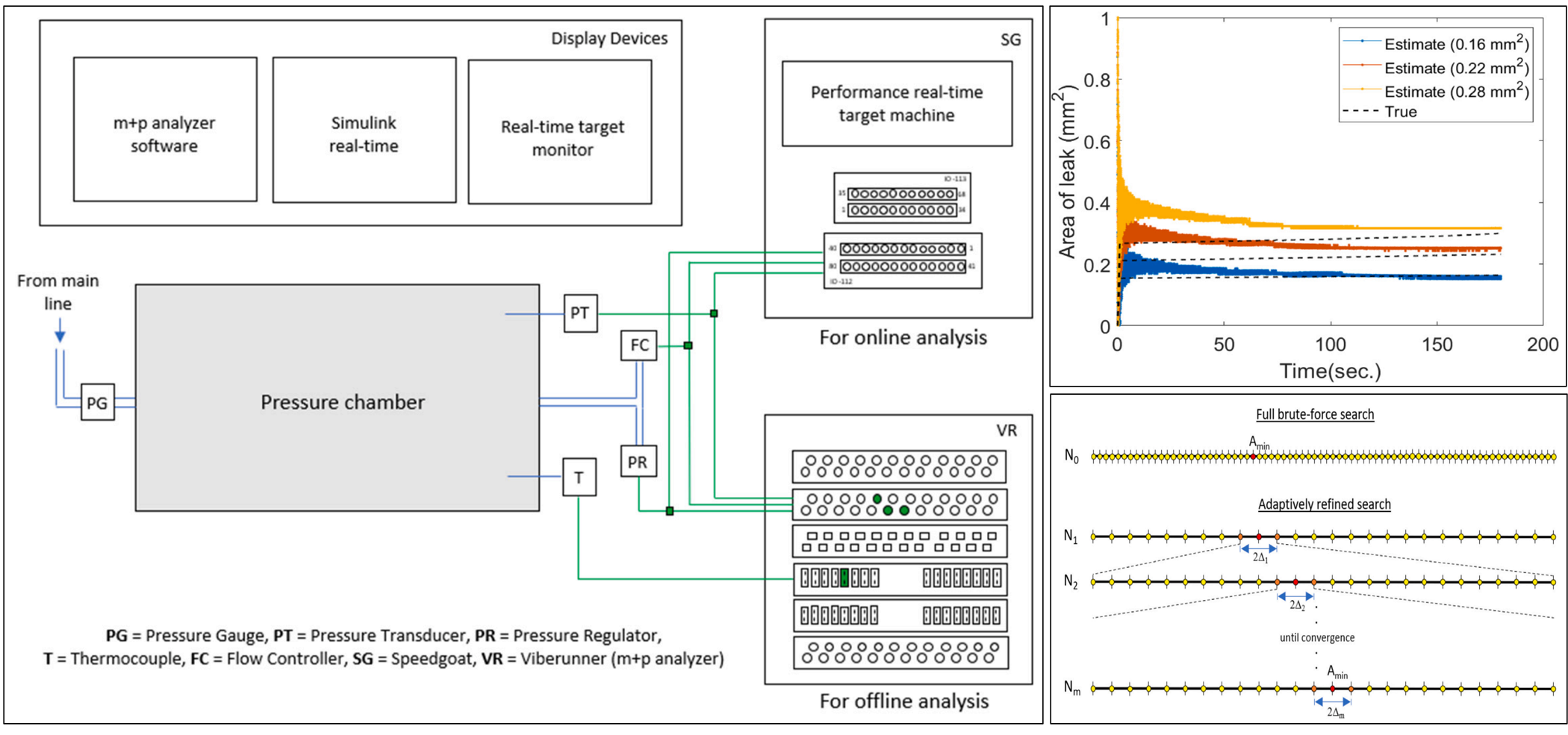
Robotics
- Pipe health monitoring robot: The pipe health monitoring system based on smart sensors which can be transported inside compressed gas pipes with the help of a conduit crawler robot to determine the extent of anomalies present in the pipeline. The pipe health monitoring system will comprise a sensor network for anomalies detection, a micro-controller for processing the data from various sensor units and a storage unit to store the processed data, and an autonomous platform or robot, to carry these components inside the pipeline. More about the project is here.
